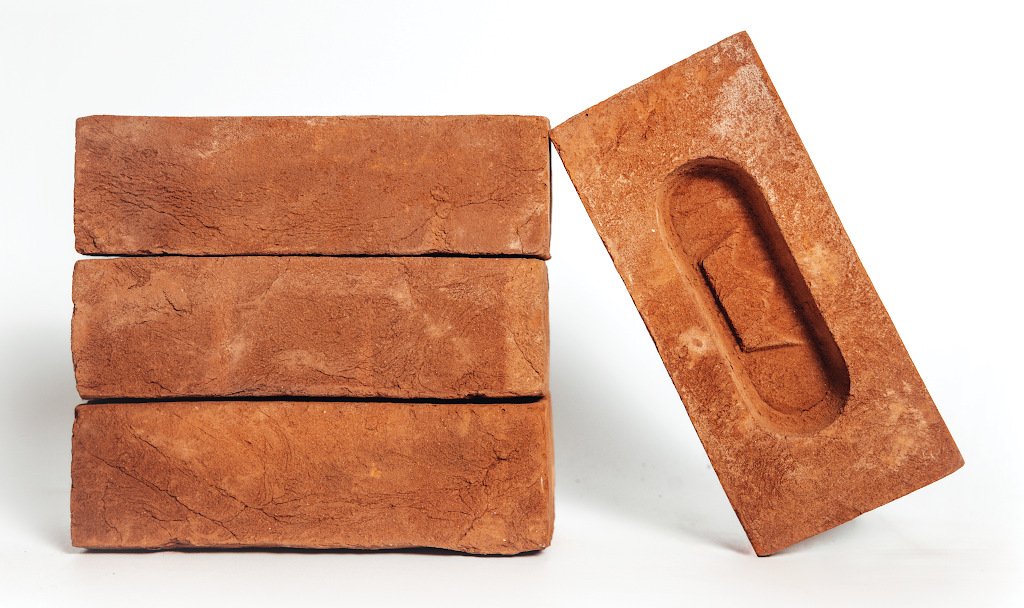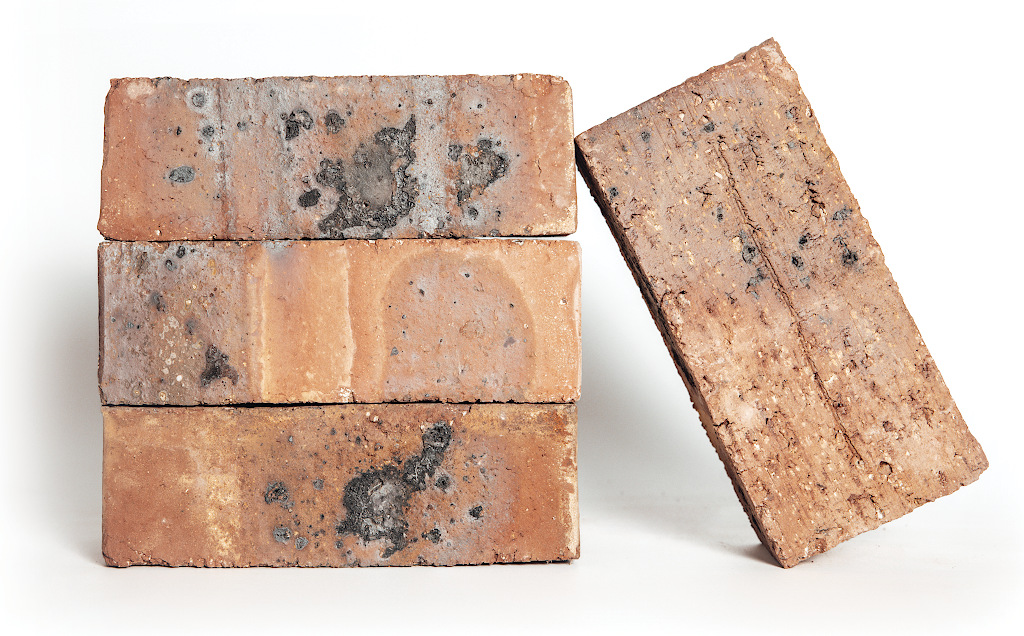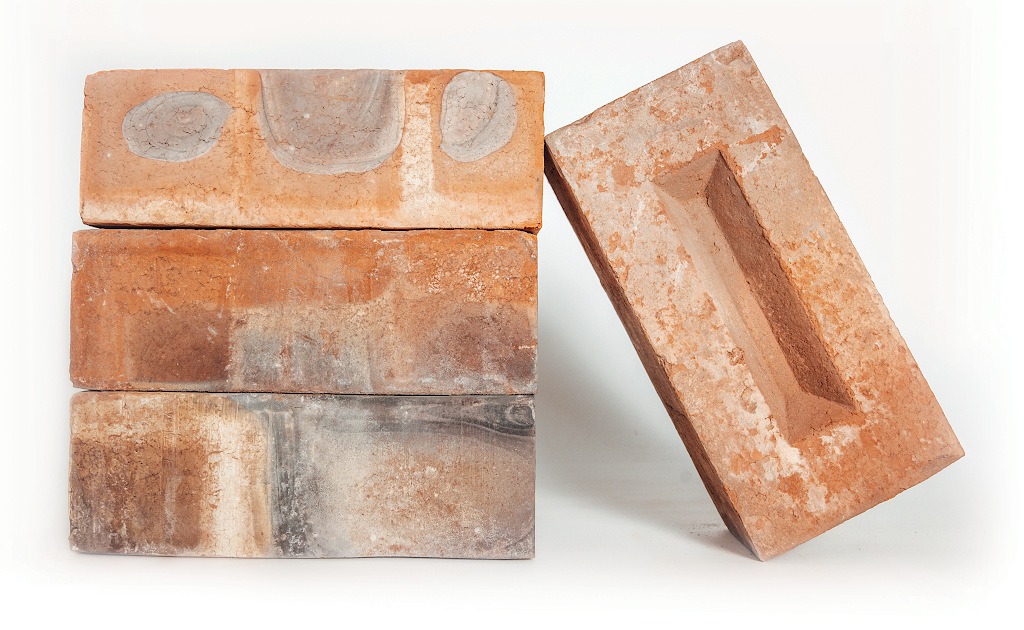Looking for Brick Slips for facade systems?
Visit our dedicated website.Looking for Brick Slips for facade systems?
Visit our dedicated website.When venturing around any populated area of the UK, you’ll see one common building material – bricks. First used by the Romans as far back as AD 43, clay bricks have long been the staple material used in many of the historic buildings still seen today, and their use is far from declining.
Bricks are manufactured to be strong, long lasting, insulating and are naturally fire resistant; it’s no wonder they’re used so extensively in UK construction.
In this guide we’ll be delving into the types of bricks most commonly used, so you can make the best, informed decisions on what to use for your building project.
The world of clay bricks can seem confusing initially, but to keep it simple, most of them fall into one of three categories:
Facing bricks – the ones you see on the outside of a building, usually chosen for aesthetic appearance
Utility and structural bricks – used on the areas you typically won’t see or pay attention to, like at or below ground level, or the internal structure
Special purpose bricks – such as air bricks, special shapes for decorative purposes and fire bricks for areas of extreme heat
Now you have a quick overview, we’ll go through each one in more detail.

To understand facing bricks, just think of them as the bricks that are facing you when looking at a building. They’re on the outside, are highly visible and give a building its aesthetic appearance.
A lot of time is usually spent selecting the right facing bricks. Whether you’re a developer creating 8 new luxury homes, or a self builder choosing the perfect bricks to complete the vision of your dream home, it’s often a big decision.
The decision can also be dictated by planning requirements and location, so it’s important to really consider what you (and sometimes the planning officers) want the completed building to look like. Although it can seem daunting, many brick suppliers and manufacturers will help you with this.
Facing bricks tend to fall into two categories – handmade bricks and machine made bricks.
Let’s take a look at both of these in depth.
Handmade bricks are considered the most premium of facing bricks. They’re created using the age-old traditional method of hand-throwing wet, prepared clay into a wooden or metal brick mould and laying them out to partially air dry, before being fired in a kiln.
This timely process means no two handmade bricks are exactly the same. They have natural creasing, texture and a unique character which cannot be emulated elsewhere, making them highly desirable and sought after.

They will usually have a frog indent (no, not an actual frog, don’t worry), but can also be solid, especially if the brick is small in size.
Historically, until the 1800’s when machine made production was introduced, all bricks were handmade. So, if you’re building in a conservation area or one of historical interest, you may be required to use handmade bricks to satisfy planning requirements.
Most often, they’re chosen for the overall look they give a premium or luxury building – we mean, who wouldn’t want to give their home or project a luxury look!
As you can imagine, this can mean handmade bricks require a higher budget investment than cheaper-to-produce machine made bricks.
Remember, the one thing you can’t easily change about a house or property once it’s built is the bricks. If your heart is set on handmade, you may need to incorporate this into your budget.
As the name suggests, machine made bricks are manufactured using machines. There’s no hand throwing clay involved here.
These types of bricks are favoured for their consistent, uniform look and suitability for many types of building projects.
There are two main types of machine made bricks: extruded and pressed.
Extruded bricks, also known as wirecut bricks, are a type of machine made brick which can be produced in high quantities in a relatively short period of time.
They are made by forcing prepared clay through a brick-shaped extrusion die under pressure. This produces a long column of clay which is cut with wires.

You can recognise them by looking at the top and bottom of a brick; the wire will leave a ‘drag’ texture. It’s also common to see circular, square or oblong-shaped perforations through the brick. This reduces weight, improves heat distribution during firing and helps bond the bricks together more easily when laying with mortar.
If the bricks weren’t processed further during manufacture, the face (the part of the bricks you see when a wall is built) will be smooth.
However, some manufacturers will create texture on the brick faces. This is done either by taking a sliver of clay away with wires to produce a wire-cut surface (known as drag-faced), or running the clay column against textured or sanded rollers.
As there are so many different finishes and production is generally cheaper than handmade, extruded bricks are a popular choice for a lot of building projects.
Pressed bricks are usually the most rigid, sharp-edged and smooth-looking type of facing bricks.
Made by hydraulically pressing clay into moulds, they can be manufactured in high volumes compared to handmade bricks, but typically not as quickly as extruded/wirecut bricks.

They have a lack of texture when compared to handmade and some wirecut bricks, but their uniform look means they’re often used for building projects needing a clean, modern look.
Some brick manufacturers do however produce characterful pressed bricks by stacking and firing them in the kiln in a way that creates attractive variances in colour. So if you do need smooth bricks with a bit more of a traditional look, don’t necessarily rule out pressed bricks.
No matter what type of facing brick you choose to build with, you will need some types of structural bricks.
These are mostly hidden. You either won’t see them, or they won’t be the main focus of your building design. Either way, you’re guaranteed to need at least one of these brick types.
Most building projects need engineering bricks. They have an extremely high compressive strength and a very low water absorption rate, so are able to withstand extreme conditions like freezing temperatures and constant exposure to moisture/rain.
For this reason, they’re used in places where performance is critical, such as damp proof coursing (DPC). Engineering bricks can be used to build up out of the ground and you’ll often see a couple of courses (rows) at ground level.
Take a look at a brick building (even your own home), and you may see a few courses (rows) of very smooth, dense bricks at the ground level before the facing bricks start.
Typically, they’re a red or blue colour and can be recognised by their solid, smooth surface and sharp edges. If you’re looking at a singular brick, you’ll see perforations through the middle and it can be significantly heavier than a facing brick.
Engineering bricks are what prevent moisture from the ground seeping up into your carefully chosen facing bricks and causing damp issues.
You may have heard of common bricks before. Traditionally, these were extruded or pressed bricks which weren’t aesthetically pleasing, were perhaps not quite consistent in size and contained some aggregates in the clay.
To counteract these less-than-appealing aesthetic qualities, they were used in buildings where the bricks wouldn’t be seen. Think internal, load-bearing walls which are plastered over, or external walls covered in render. They were a cheaper option when there was no worry about whether the bricks were pleasing on the eye.
Nowadays, new common bricks are manufactured to meet modern quality and testing standards, and can be used aesthetically for new builds, or to match up to older common bricks.
Now we’ve covered the main types of bricks, there are a few more categories which are used for specific functions.
Unless you’re an architect or builder, you probably don’t need to worry about these, but they are worth knowing about.

Ever look at the wall of a property and see the odd, seemingly random brick full of square/rectangular holes? That’s an air brick.
They’re used for ventilation and can be made from a range of materials including clay, plastic, and even metal.
No prizes for guessing this one. Fire bricks are a type of refractory brick made with high silica and alumina content, designed to withstand extremely high temperatures while offering low thermal conductivity.
They’re mostly used where you’ll see open fire. Think fireplaces, pizza ovens and furnaces.
When a premium or luxury style property is being designed, it’s likely there’ll be a few decorative details in the brickwork.
Special shape bricks come in a range of shapes and sizes, dependent on their intended use.
You might see them around windows and doors in the form of archways or window reveals, or to cap garden walls.
A few common types include:
Many manufacturers offer a standard range of special shaped bricks to complement their range, either available off-the-shelf or made to order.
Now you have a better understanding of the different brick types used throughout the UK, there are a few points to think about if you’re on the brick hunt.
Just knowing you’re researching brick types tells us you’re invested in the visual appeal of your building project, whether for your own home or a development of several houses.
The biggest piece of advice we can give, is make sure you get samples of your facing bricks.
Facing bricks can make or break the look of a property, and any reputable brick supplier will be more than happy to arrange brick samples for you.
Suppliers understand you can’t change the bricks once a property is built and want to help you make the right choice to suit your design and location. They’re the part of your investment you want to get right.
When you’ve narrowed down your choice, we’d recommend purchasing a square metre of bricks to build as a test panel on site, to be doubly sure they’re exactly what you want.
We’ve talked a lot about bricks, but mortar colour will make a difference to the appearance of the bricks you choose.
Mortar is something that can be overlooked, so speak to your architect about what they’re specifying and/or your contractor/builder about what they plan to use.
This is another reason we recommend getting a test panel built on site, so you can check you’re completely happy with the overall look before committing to the build.
You will need some types of structural bricks, even if it’s just engineering bricks to build out of the ground with, but you most likely don’t need to worry about them.
Your architect will include them in the design and specify the size, type and colour, then your contractor will usually source them for you. Structural type bricks are very common in building work and are quite easy to get hold of. As long as they meet modern testing standards and are suitable for their intended use, you can safely leave the choice of these to your builder.
It’s likely at this point you have an idea of the colour and look you want to go for, or you’ve been advised by planning officers that your brickwork needs to match a certain type of brick or stay in keeping with others used nearby.
You’re obviously doing your online homework else you wouldn’t be reading this, but if you’d like some help with finding the right bricks, we’re more than happy to help.
You can get expert advice using our brick matching service, or let us know what bricks you like the look of and we’ll send you samples.
If you’d like to learn more about brick choices and matching bricks for older properties, take a look at our guide on imperial brick sizes.
For more technical specifications, you may also find our guides on standard UK brick size and brick size testing helpful.